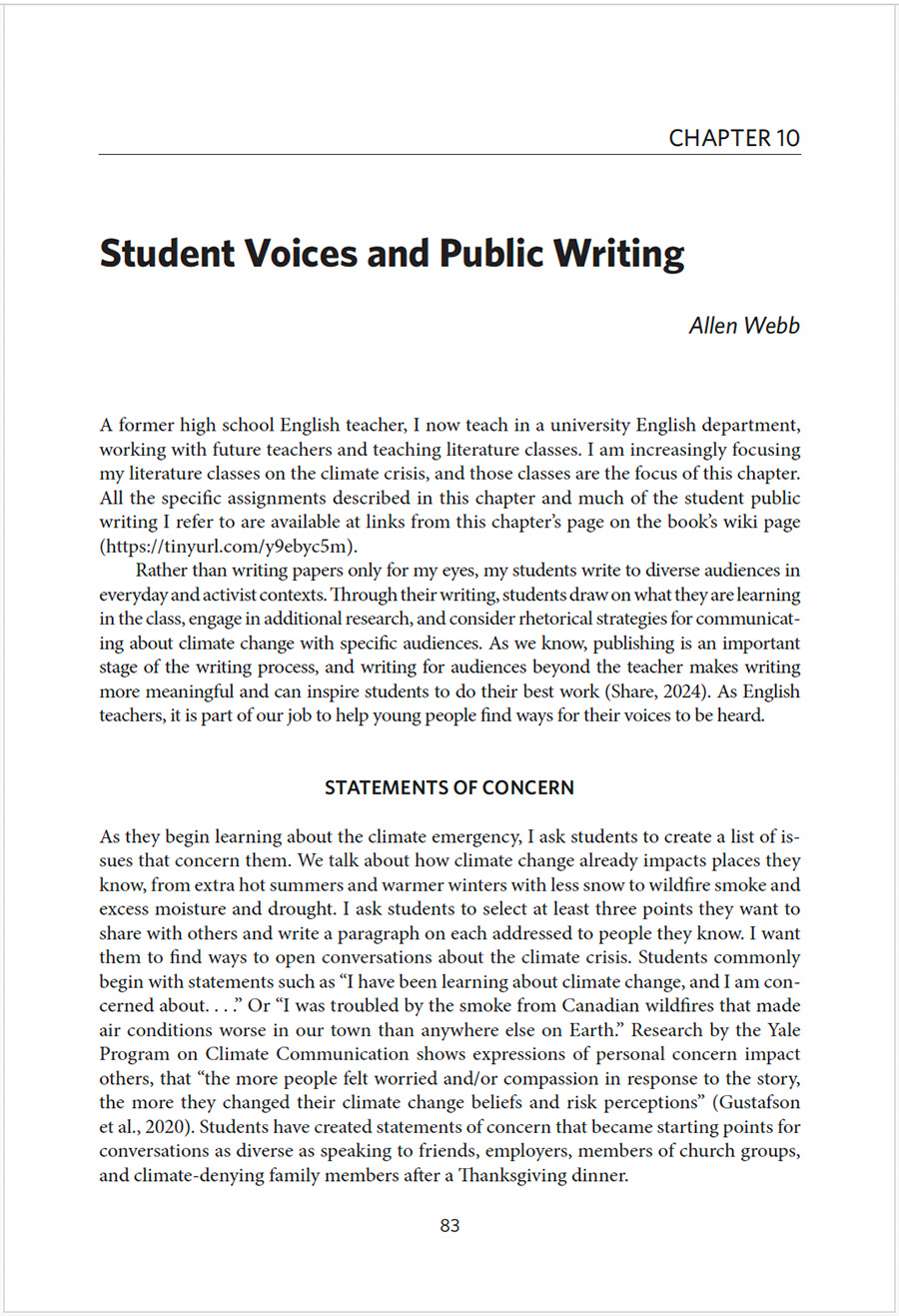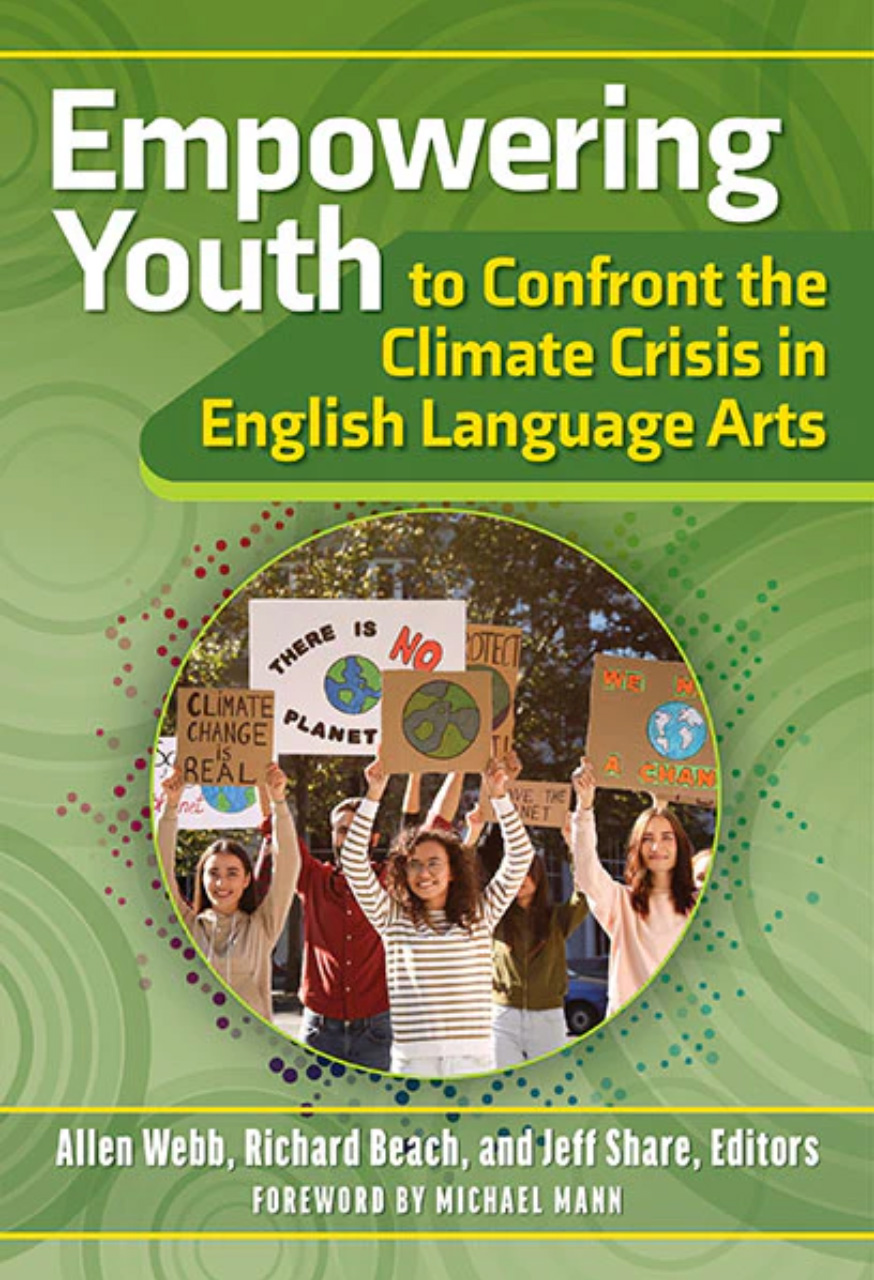Content-Area Literacy
Student Voices and Public Writing
A Chapter from Empowering Youth to Confront the Climate Crisis in English Language Arts
Summary:
Publishing is an important stage of the writing process, and writing for audiences beyond the teacher makes writing more meaningful and can inspire students to do their best work. This chapter supports English teachers to help young people find ways for their voices to be heard, with a focus on student writing about the climate crisis.“Public writing not only helps students better understand, connect, and clarify the issues, but it also establishes their stance, empowers them to speak out, prepares them for activist leadership, and gives them hope for the future.”
Also Recommended
See allTeaching from an Ethical Center: Practical Wisdom for Daily Instruction
Author Cara Furman talks with Stephanie Jones, co-director of the Red Clay Writing Project, about bringing ethics, philosophy, and body-centered practices into teaching.
Read more
Writing Our Future: Our Towns, Our Stories
Our Towns, Our Stories provided students an opportunity to try their hand at journalistic writing about the place they call home. Writer-facing modules and resources are available along with reflections by students about their process.
Read more



